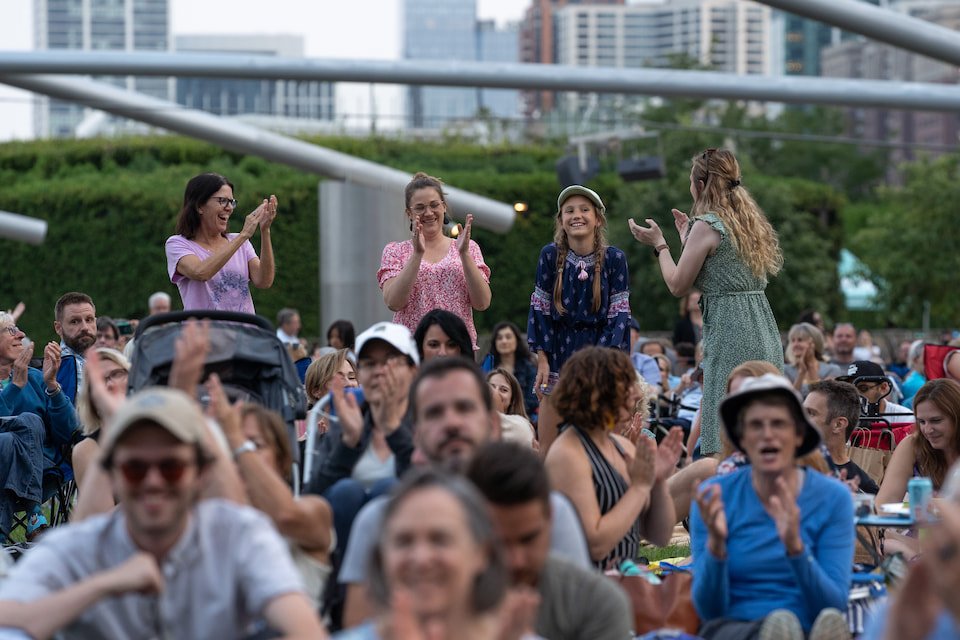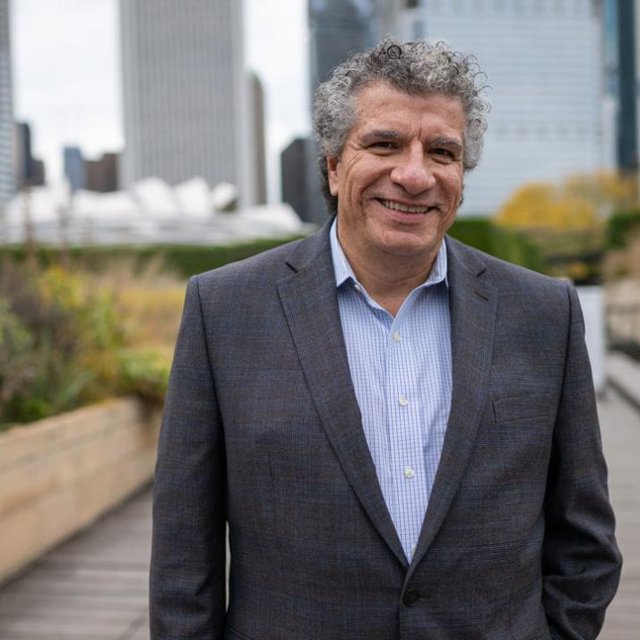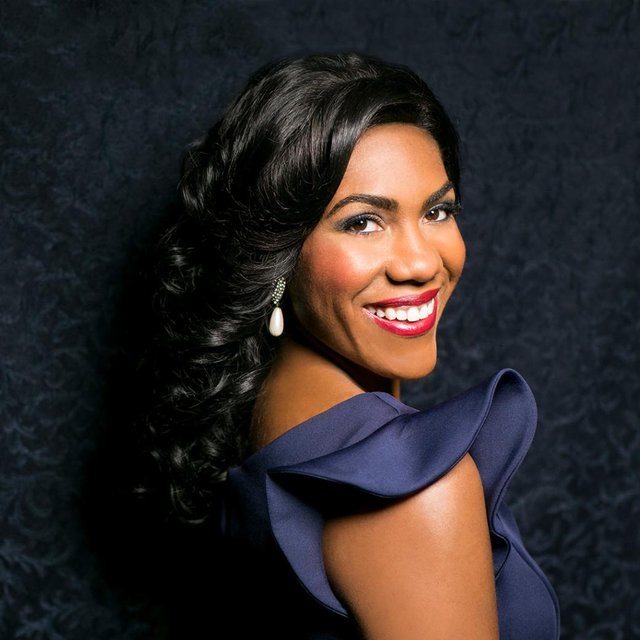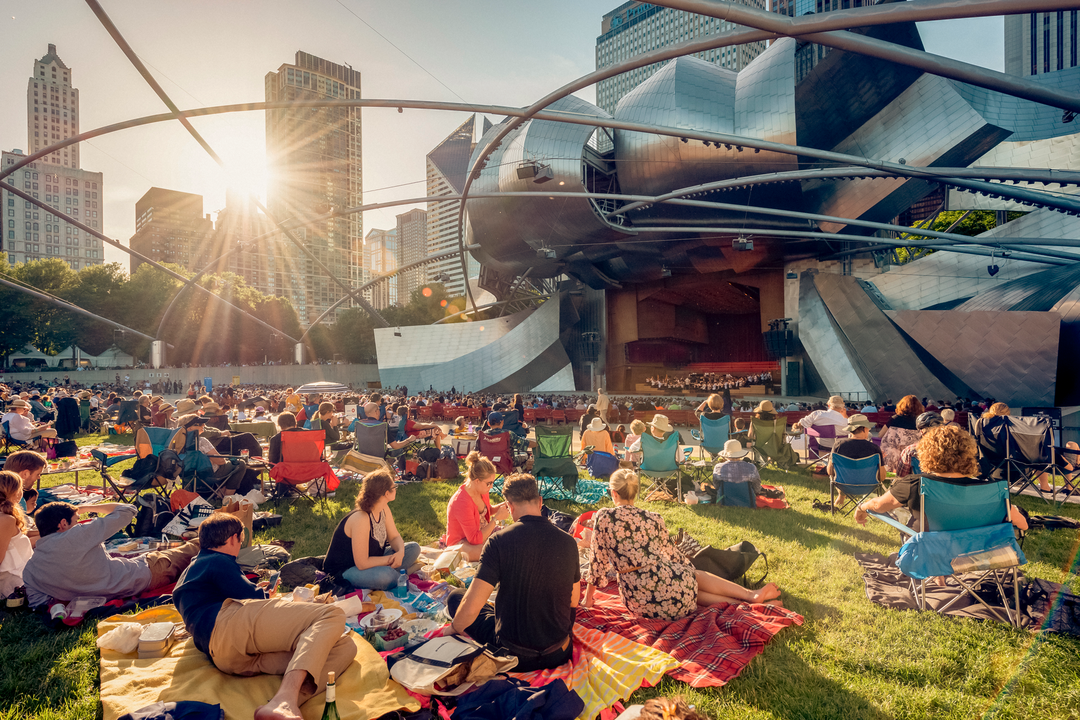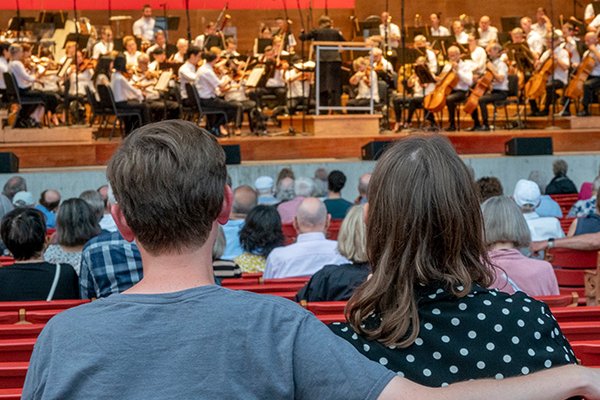
Songs of Love and Life
Program
Brian Nabors Pulse (12 mins)
Peter Lieberson Neruda Songs (30 mins)
If your eyes were not the color of the moon
Love, love, the clouds went up to the tower of the sky
Don’t go far off, not even for a day
And now you're mine
My love, if I die and you don’t
Intermission (20 mins)
Missy Mazzoli These Worlds In Us (9 mins)
Richard Strauss Death and Transfiguration (23 mins)
Featuring
Program Notes
Brian Nabors (b. 1991)
Pulse (2019)
Scored for: three flutes including piccolo, two oboes including English Horn, three clarinets including bass clarinet, three bassoons including contrabassoon, four French horns, three trumpets, three trombones, tuba, timpani, percussion, harp, piano, celesta, and strings
Performance time: 12 minutes
First Grant Park Orchestra performance
Brian Raphael Nabors likes to tell stories in his compositions with a colorful harmonic language and eclectic musical palate inspired by jazz, funk, R&B, gospel, and more. Growing up in the South, Nabors was exposed to music that was often deeply rooted in spirituality. As such, much of his music reflects on life, nature, and the human condition. Pulse is no exception. Nabors calls it “a long contemplation of daily life as we know it, combined with thoughts of life in nature.” To him, the universe has a natural, unified rhythm to it. “It is as if every living and moving thing we are aware and unaware of is being held together by a mysterious, resolute force,” he says.
Nabors calls Pulse “an episodic rhapsody” that explores different colors and rhythms but is united by a steady pulse. “Each episode is meant to symbolize a different scenario of life for the listener,” Nabors writes in his program note, “be it a buzzing modern metropolis, a deep wilderness abundant with animalia, or the scenic endless abyss of the ocean.” These scenes and their associated philosophical meanings are united by a contemplative string theme that “symbolizes our deep connection as living beings to everything within, over, under, and around us,” Nabors says. Pulse was first performed by the Nashville Symphony Orchestra and conducted by our very own music director, Maestro Giancarlo Guerrero, as part of the NSO’s Composer Lab Showcase in 2019.
Peter Lieberson (1946–2011)
Neruda Songs (2005)
Scored for: two flutes including piccolo, two oboes including English Horn, two clarinets including bass clarinet, two bassoons, two French horns, two trumpets, percussion, harp, piano, strings, and solo mezzo soprano
Performance time: 30 minutes
First Grant Park Orchestra performance
While browsing the bookshop in the Albuquerque airport, Peter Lieberson was struck by a bright pink volume. The book was 100 Love Sonnets by Chilean poet Pablo Neruda. “As I glanced through the poems, I immediately thought that I must set some of these for Lorraine,” Lieberson wrote. The Lorraine in question was none other than his wife, the renowned mezzo-soprano Lorraine Hunt Lieberson. The two met in 1997 while working on Lieberson’s opera Ashoka’s Dream and married two years later. The composer finally had the opportunity to set Neruda’s poetry a few years after discovering the book through a joint commission from the Los Angeles Philharmonic and Boston Symphony. Sadly, Neruda Songs would be Lieberson’s final collaboration with his beloved wife, making the work even more poignant. Lorraine Hunt Lieberson premiered and recorded the orchestral song cycle in 2005, one year before her death at the age of 52, following a long battle with breast cancer.
The five poems Lieberson chose to set in Neruda Songs trace the arc of love from initial butterflies to heartbreaking loss and every feeling in between. The first song, “Si no fuera porque tus ojos tienen color de luna” (“If your eyes were not the color of the moon”), sees the poet enraptured in the feelings of new love, alternating between excitement and awe. The second song, “Amor, amor, las nubes a la torre del cielo” (“Love, love, the clouds went up the tower of the sky”), is equal parts joyful and mysterious as the lovers see the world afresh, their eyes opened by love.
Taking a darker turn, “No estés lejos de mí un solo día” (“Don’t go far off, not even for a day”) reflects on the pain of separation from one’s love for even one day, the singer’s long vocal lines growing increasingly urgent in their pleading. “Ya eres mía. Reposa con tu sueño en mi sueño” (“And now you’re mine. Rest with your dream in my dream”) begins with a forceful statement of passion before softening as the poet lulls their beloved to sleep with a gentle bossa nova rhythm in the maracas. The final song, “Amor mío, si muero y tú no mueres” (“My love, if I die and you don’t”), continues this lullaby. Lieberson writes of this sad but ultimately peaceful song, “There is the recognition that no matter how blessed one is with love, there will be a time when we must part from those whom we cherish so much. Still, Neruda reminds one that love has not ended. In truth there is no real death to love nor even a birth: ‘It is like a long river, only changing lands, and changing lips.’”
Missy Mazzoli (b. 1980)
The Worlds In Us (2006)
Scored for: two flutes, two oboes, two clarinets, two bassoons, four French horns, two trumpets, two trombones, tuba, percussion, harp, and strings
Performance time: 9 minutes
First Grant Park Orchestra performance
Dubbed “Brooklyn’s post-millennial Mozart” by Time Out NY, Missy Mazzoli is one of the most exciting and inventive composers working today. The Grammy-nominated composer served as Mead Composer-in-Residence with the Chicago Symphony Orchestra from 2018 to 2021, and her latest opera, The Listeners, was co-commissioned by Lyric Opera of Chicago and performed there this spring. Mazzoli wrote These Worlds In Us in 2006. A personal piece, it is dedicated to Mazzoli’s father, a Vietnam War veteran. The title comes from a line in James Tate’s poem The Lost Pilot, also written in honor of Tate’s father, who died in World War II.
“In talking to [my father] it occurred to me that, as we grow older, we accumulate worlds of intense memory within us, and that grief is often not far from joy,” Mazzoli writes in her program note. “I like the idea that music can reflect painful and blissful sentiments in a single note or gesture, and sought to create a sound palette that I hope is at once completely new and strangely familiar to the listener.” Mazzoli’s work is full of unusual instrumental colors, such as melodicas (a kind of mouth organ with a keyboard) and mournful string glissandi that create the impression of drowning. The piece also bears numerous nonclassical influences. “The rhythmic structures and cyclical nature of the piece are inspired by the unique tension and logic of Balinese music,” Mazzoli explains, “and the march-like figures in the percussion bring to mind the militaristic inspiration for the work as well as the relentless energy of electronica drum beats.”
Richard Strauss (1864–1949)
Tod und Verklärung (Death and Transfiguration), TrV 158, op. 24 (1888)
Scored for: three flutes, three oboes including English Horn, three clarinets including bass clarinet, three bassoons including contrabassoon, four French horns, three trumpets, three trombones, tuba, timpani, percussion, two harps, and strings
Performance time: 23 minutes
First Grant Park Orchestra performance: August 25, 1936; Richard Czerwonky, conductor
Throughout the late 1880s, Richard Strauss devoted much of his compositional energies to writing tone poems. Also known as symphonic poems, these are usually one-movement orchestral works that depict something nonmusical, such as a painting, poem, landscape, or story. Strauss was inspired to pursue the genre after meeting violinist and composer Alexander Ritter. “He urged me on to the development of the poem, the expressive in music, as exemplified in the works of Liszt, Wagner, and Berlioz,” Strauss wrote. Ritter also introduced him to the work of Arthur Schopenhauer, who also greatly influenced Wagner. Strauss’s 1889 tone poem Tod und Verklärung (Death and Transfiguration) would be informed by Schopenhauer’s philosophy that one’s will—an unconscious, relentless striving—is the root of suffering and that the only redemption from this suffering is through ascetic renunciation of the will.
With a string of successful tone poems under his belt, starting with Aus Italien in 1886, Strauss began work on Tod und Verklärung in the summer of 1888, completing it the following year. He conducted the premiere in 1890 at the Eisenach Festival to great acclaim. Strauss believed the audience would struggle to follow the work without an explicit program detailing the scenario. Ritter provided Strauss with a sixteen-line poem for the program and a longer version to be printed in the score. Ritter’s poem tells the story of a man on his deathbed,despairing over his impending death. Yet, a smile crosses his face as he dreams of his happy childhood. Suddenly, death cruelly shakes him awake, and he sees his life flash before his eyes, from the innocence of youth to his adult struggle to achieve an unattainable, unknowable goal—perhaps some artistic ideal. Finally, death’s iron hammer comes down. In death it is revealed what the man sought on earth: redemption and transfiguration. As Strauss put it in a letter in 1894, “the soul leaves the body in order to find gloriously achieved in everlasting space those things which could not be fulfilled here below.”
Musically, the tone poem is in two sections, representing the man’s death and subsequent transfiguration. But first, a slow introduction sets the scene in the man’s small, dimly lit room and introduces two main themes. The first theme in the flute represents what Ritter calls “the impudent play of youth,” while the second theme in the oboe reflects the innocence of “childhood’s golden time.” Frightening blows from the kettledrum herald the man’s struggle with death, and the ensuing syncopated rhythm depicts the man’s labored breathing. Just before the end of the first struggle, a new idea emerges in the brass. This central theme, an outgrowth of the previous “childhood” and “youth” themes, represents “the ideal” the dying man had pursued in vain throughout his life. Strauss explains, “It is this theme…upon which the successive climaxes of the piece are built and which, together with the theme of ‘childhood,’ will achieve its apotheosis in the score’s final pages.”
Although Strauss eventually shifted his philosophical allegiance from Schopenhauer to Friedrich Nietzsche, the theme of “the ideal” still rang in his ears. Sixty years later, he would quote this theme in the final song of his Four Last Songs, “Im Abendrot,” after the last line, “Ist dies etwa der Tod?” (“Is this perhaps death?”). Strauss got his answer. On his own deathbed, Strauss reportedly said, “Death is just as I composed it in Death and Transfiguration.”
—Katherine Buzard
Event Sponsors
This concert is generously supported as part of the Dehmlow Choral Music Series.
Artistic Leadership
Support The Festival
Violin I
Jeremy Black, concertmaster
Vacant, assistant concertmaster
Trista Wong
Zulfiya Bashirova
Jennifer Cappelli
Injoo Choi
Dima Dimitrova
Erica Hudson
Hyewon Kim
Matthew Lehmann
Jayna Park
Rika Seko
Karen Sinclair
Bonnie Terry
Krzysztof Zimowski
Violin II
Liba Shacht, principal
Vacant, assistant principal
Ying Chai
Ran Cheng
Karl Davies
Likai He
Ann Lehmann
Laura Miller
Cristina Muresan
Kjersti Nostbakken
Irene Radetzky
Jeanine Wynton
Thomas Yang
Viola
Terri Van Valkinburgh, principal
Yoshihiko Nakano, assistant principal
Elizabeth Breslin
Beatrice Chen
Amy Hess
Rebecca Swan
Chloé Thominet
Cello
Walter Haman, principal
Peter Szczepanek, assistant principal
Calum Cook
Larry Glazier
Steven Houser
Eric Kutz
Eran Meir
Double Bass
Colin Corner, principal
Peter Hatch, assistant principal
Andrew Anderson
Christian Luevano
Samuel Rocklin
Chunyang Wang
Chris White
Flute
Vacant, principal
Alyce Johnson
Jennifer Lawson, assistant principal
Piccolo
Jennifer Lawson
Oboe
Mitchell Kuhn, principal
Vacant
Anne Bach, assistant principal
English Horn
Anne Bach
Clarinet
Dario Brignoli, principal
Trevor O’Riordan, assistant principal
Besnik Abrashi
Bass Clarinet
Besnik Abrashi
Bassoon
Eric Hall, principal
Nicole Haywood Vera Tenorio, assistant principal
Vacant
Contrabassoon
Vacant
Horn
Vacant, principal
Stephanie Blaha, assistant principal
Neil Kimel
Brett Hodge
Paul Clifton
Trumpet
David Gordon, principal
Mike Brozick
Vacant, assistant principal
Vacant
Trombone
Daniel Cloutier, principal
Jeremy Moeller, assistant principal
Bass Trombone
Alexander Mullins
Tuba
Andrew Smith, principal
Timpani
Daniel Karas, principal
Josh Jones, assistant principal
Percussion
Josh Jones, principal
Vacant, assistant principal
Doug Waddell
Harp
Kayo Ishimaru-Fleisher, principal
Keyboards
Christopher Guzman
Orchestra Librarian
Eliza Bangert, principal
Grant Park Chorus
* denotes leave-of-absence † 2025 Vocal Fellow
Laura Lynch Anderson
Kristina Bachrach
Madalynn Baez
Megan E. Bell
Alyssa Bennett
Tamara Bodnar
Kylie Buckham
Anna Joy Buegel
Laura Bumgardner
Katherine Buzard
Bethany Clearfield
Nathalie Colas
Carolyne DalMonte
Megan Fletcher
Kaitlin Foley
Saira Frank
Julia Frodyma
Katherine Gray-Noon
Kimberly Gunderson
Alexandra Ioan
Alexandra Kassouf
Darlene Kelsey
Olivia Knutsen
Marybeth Kurnat
Katelyn Lee
Kyuyim Lee+
Rosalind Lee
Veronica Mak
Hannah Dixon McConnell
Marie McManama
Kathleen Monson
Susan Nelson
Evangeline Ng
Máire O'Brien
Alexandra Olsavsky
Laura Perkett
Angela Presutti Korbitz
Alexia Rivera
Veronica Samiec
Emily Sinclair
Molly Snodgrass
Tiana Sorenson
Christine Steyer
Sarah van der Ploeg*
Lydia Walsh-Rock
Sherry Watkins
Emily Amesquita
Melissa Arning
Christina Bernardoni
Angela Born
Bethany Brewer
Julie DeBoer
Leah Dexter
Katrina Dubbs
Stacy Eckert
Margaret Fox
Catarine Hancock
Ruth Ginelle Heald
Sophia Heinz
Miya Higashiyama
Carla Janzen
Amy Allyssa Johnson
Kathryn Kinjo Duncan
Amanda Koopman
Anna Laurenzo
Jeannette Lee
Thereza Lituma
Chelsea Lyons
Victoria Marshall
Jessica McCarthy
Quinn Middleman
Ella Peters
Sarah Ponder
Emily Price
Stephanie Schoenhofer
Suzanne A. Shields
Marissa Simmons
Cassidy Smith
Aidan Spencer
Alannah Spencer
Margaret Stoltz
Carolyn Sundlof Boudreau
Gabrielle Timofeeva López
Elizabeth Vaughan
Corinne Wallace-Crane
A.J. Wester
Debra Wilder
Isabel Yang+
Charles Anderson
Enrico Giuseppe Bellomo
Justin Berkowitz
Madison Bolt
Hoss Brock
Steven Caldicott Wilson
Opal Clyburn-Miller+
John J. Concepción
Micah Dingler
Jared V. Esguerra
Alec Fore
Ace Gangoso
Klaus Georg
Tejas Gururaja
Paul Hunter
Garrett Johannsen
William Johnson
James Judd
Tim Lambert
Tyler Lee
Stephen D. Noon
Marcos Ochoa
Brett Potts
Nicholas Pulikowski
Peder Reiff
Samuel Rosner
Matthew W. Schlesinger
Joe Shadday
Aaron Short
Brian Skoog
Michael St. Peter
Ryan Townsend Strand
Alan Taylor*
Sean J. Watland
Nate Widelitz
Walter Aldrich
Evan Bravos
Matthew Brennan
Michael Cavalieri
Ryan J. Cox
Ed Frazier Davis
Lifan Deng
Matthew Dexter+
Chris DiMarco
Christopher Filipowicz
Dimitri German
Dominic German
David Govertsen
Spencer Greene
Brian Hupp
Jan Jarvis
Jess Koehn
Eric Miranda
Ian Morris
Ian Murrell
John E. Orduña
Wilbur Pauley
Douglas Peters
Jackson Pierzina
Martin Lowen Poock
Ian Prichard
Dan Richardson
Stephen Richardson
Benjamin D. Rivera
Scott Uddenberg
Schyler Vargas
Vince Wallace
Aaron Wardell
Ronald Watkins
Jonathon Weller
Peter Wesoloski
Jonathan Wilson
Chuck Foster
John Goodwin
Kyuyim Lee
Isabel Yang
Opal Clyburn-Miller
Matthew Dexter
